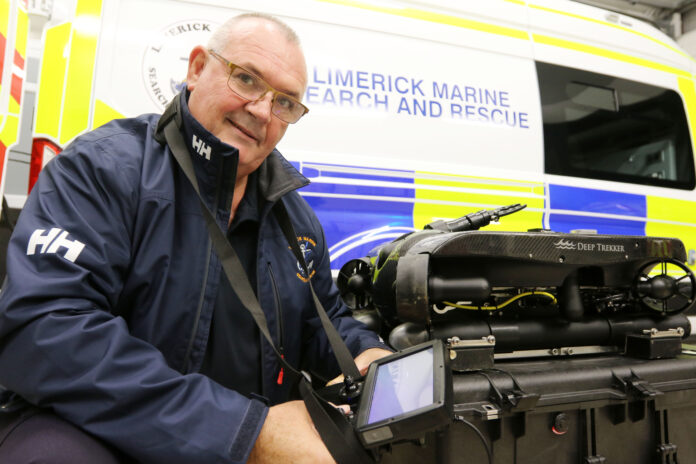
LIMERICK Marine Search and Rescue Service (LMSRS) said it is proud to be the first emergency response unit in Ireland using a state-of-the-art underwater-drone to assist in rescuing casualties and recovering deceased people from the water.
The LMSRS, which is also the first voluntary rescue service in Europe using the Deep Trekker Revolution drone, said it hopes the technology will reduce dangers for its divers while also improving its chances of rescuing casualties or recovering bodies.
The €125,000 remotely operated drone, which was funded through public donations and the JP McManus Benevolent Fund, uses an on-board camera, sonar, live satellite mapping systems, and an on-board claw to retrieve people underwater.
“We are very appreciative of the people of Limerick who donate to us, and we are so thankful to the JP McManus Benevolent Fund. We hope that we give back a good service in return,” said LMSRS treasurer Mal Sherlock.
The proud “soda-cake” who immigrated to Raheen has given 33 years to the LMSRS which, is “constantly innovating and upgrading” to keep up with the ever-changing times.
“One of our biggest problems is that, if a person is missing underwater, our divers go in and search but sometimes the areas they go into are too dangerous and we can’t commit divers in dangerous areas,” said Mr Sherlock.
All 26 members are being trained in how to use the “state of the art” drone, which can retrieve a casualty using its claw and six internal magnet propellers.
“What the unit does is actually phenomenal, and because we deal mostly in zero visibility the sonar facility on the drone is able to cast a shadow across the seabed and we can decipher on what we are looking at by breaking down elements of the shadow.”
The drone automatically lets LMSRS know what the depth of the water is when it is placed on the surface and LMSRS can also set the drone to operate at whatever depth it wants to search.
It can also provide a pre-dive GPS mapping grid of the search area which allows the drone to continue from a point in its “search mission” should it have to be removed from the water for any reason.
“When we are diving we may miss something alongside us that might be only three feet away, whereas this drone is breaking down that barrier of misses,” Mr Sherlock explained.
“It is powerful enough to retrieve people, it has the strength to lift a person, it won’t let it go.”
“Hopefully it will change how we work and give us a better chance of recovery.”
“When we enter the water we also want closure for the family and if we come off the water and there is no closure, we are as gutted as the family – so at least this will give us another tool in our arsenal.”
“I’m not saying we will do it every time, but we hope it will give us a better chance of recovery.
No one wants to see rescuers injured or loose their lives during a rescue or recovery mission, Mr Sherlock added.
“We wouldn’t be entering a diver in water that has speeds of four knots, but we can enter this unit at four knots, that would be at its maximum speed”.
“This will negate the chance of us putting a diver into the water to endanger themselves going into a dangerous area.”










